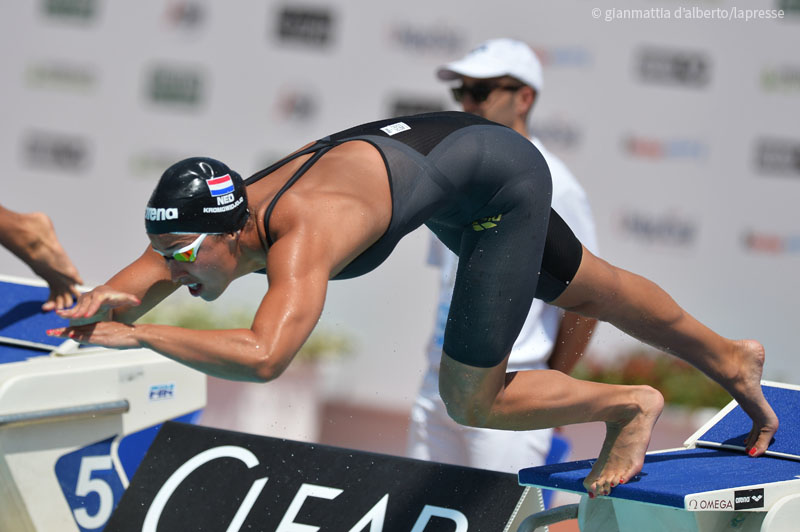The summer of 2006 is one that will live long in the memory for Ranomi Kromowidjojo.
After competing at the European Junior Championships in Palma de Mallorca, Ranomi was called up to the Netherlands squad for the senior competition in Budapest.
There she marked her debut with silver, swimming the second leg of the 4x100m freestyle as the Dutch quartet finished behind Germany. Two weeks later Ranomi turned sweet 16.
Since then she has won sprint freestyle titles at Olympic, world and European level.
The 100m freestyle is the glamour race. “We call it the king’s event in Holland,” smiles Ranomi’s coach Patrick Pearson. “We see it as the main event. It is just long enough to have a lot of excitement. And it’s not too long to get a little bit bored by it.”
So, what is different about Ranomi?
STROKE
“Ranomi has a different stroke to other girls because she has a stroke with a little bit more rotation, there is not a lot of gliding in her stroke.
“Her stroke rate over 100m is about 53/54 which is quite high. She has a more downward stroke with not a lot of gliding in it. She gets a lot of power from her rotation. She can swim 50 free in a 63 stroke rate which is very high.
“One of the most important things is you have a nice high elbow catch during your stroke, this is something Ranomi can do at high intensity even over 100m but also in the 50, she is still able to have a pretty high elbow during her stroke.”
KICKING
“Some are very low in the water which creates a lot of drag. When you see good athletes swim you don’t see a lot of waves from the back end of their body, it’s pretty calm even when they are swimming at high speed . You know that the athlete doesn’t make a lot of resistance.
“ It is not only propulsion, it is also drag. This is something which could be the difference between athletes because you see at a young age they put a lot of energy into moving the water in all directions and making a lot of waves instead of pushing against the water surface and keeping the water more calm.
“You can practice sculling exercises to feel the water but also trying to get your body in movement while lying still in the water then you know what the timing/speeds increase should be in order to push against the water instead of pushing through it.
“If you lie still and you push hard then you push through the water hen you can see how much distance you can travel on only one pull from a still position. If it is a lot then you know you have a feeling for it and depending on what speed you swim you can put more or less power in the catch phase compared to the pushing phase.”
BREATHING
“Ranomi breathes every four strokes in the 100 freestyle. Pieter van den Hoogenband (double Olympic 100m freestyle champion) did every two. Some do one out of six, not many do one out of three.
“Nearly every athlete has a side where they can breathe most easy and have most power in their stroke. For learning it is good to breathe every side because then you get an even stroke because if you learn only breathing on one side you may have a stroke that is a bit technically less on one side than the other. Keep a constant breathing pattern in the 100.”
—————
